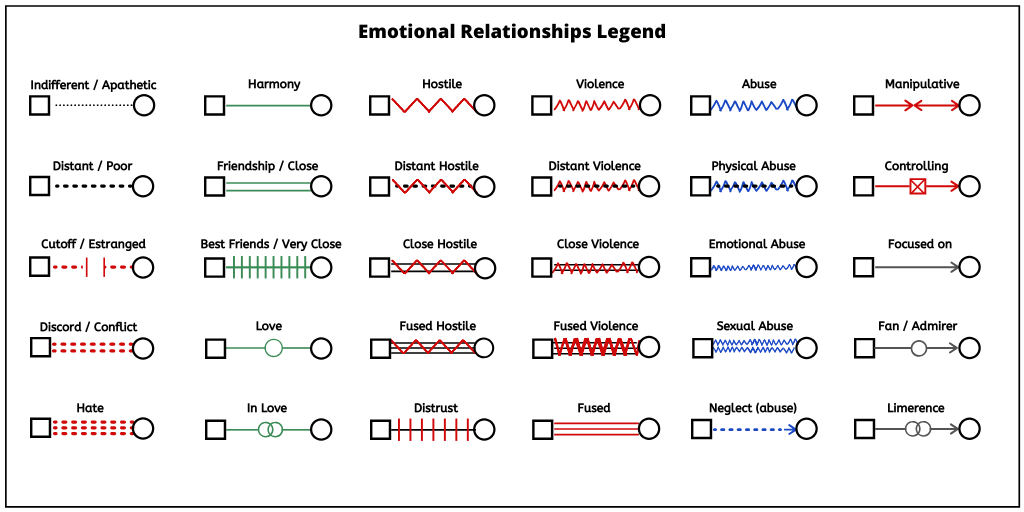

The states shared programmatic and technical challenges, risks, benefits and lessons learned integrating genogram functionality into their child welfare systems.Īdditionally, Ohio demonstrated their genogram functionality. GenoPro has a tool to quickly create a legend of your family tree / genogram. This webinar features Indiana and Ohio as they describe their experiences in using genograms to aid in child welfare practice. A completed genogram is illustrated in Figure 3. Title IV-E agencies can use genograms as tools in both assessment and intervention. The genogram and legend used in this study consist of the classical family tree and a specific, brief coded classification of diseases, health prob lems, social events, and family interactions.

William and Elisa are close friends, while Elisa's parents didn't get along well. We can presume that Michael and Ann are in a loving and harmonious relationship. The genogram can be useful in gathering information about family members, understanding relationship dynamics and behavioral patterns, conducting assessments, exploring placement and family support options, and guiding casework to useful and needed interventions. It is a genogram example that displays an emotional relationship. Family relationship diagramming or genograms provide a visual tool for charting basic family structure and exploring family and case relationships across time.


 0 kommentar(er)
0 kommentar(er)
